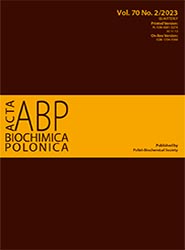Age-related effects of fenofibrate on the hepatic expression of sirtuin 1, sirtuin 3, and lipid metabolism-related genes
Abstract
Background: Sirtuin 1 (Sirt1) and sirtuin 3 (Sirt3) participate in the regulation of lipid metabolism. Our aim was to investigate the effects of the hypolipemic drug fenofibrate (FN) on hepatic Sirt1 and Sirt3 expression, in relation to the expression of lipid metabolism-related genes and in the context of aging. Methods and Results: Young and old male Wistar rats were fed standard chow or supplemented with 0.1% or 0.5% FN for 30 days (n=7–10 in each group). In young rats, 0.1% FN did not affect Sirt1 expression, however, 0.5% FN decreased Sirt1 and both doses reduced Sirt3 protein levels. In old rats, 0.5% FN decreased hepatic Sirt1 mRNA and both doses reduced Sirt1 protein levels, but not Sirt3 expression. Although hepatic Pparα protein levels did not change, FN treatment of young rats induced Cpt1b expression, whereas Lcad, Acox1, Pmp70, and Hmgcs2 expression increased only after 0.1% FN, and Fas2 expression decreased after 0.5% FN. In the liver of old rats, both doses increased Cpt1b and Lcad expression. Only 0.1% FN increased Pmp70 and Hmgcs2 expression, and only 0.5% FN increased Acox1 and Fas2 mRNA levels. Conclusions: Treatment with fenofibrate at low or high doses may downregulate the expression of Sirt1 and Sirt3 proteins in the rat liver. The dosage of FN affects molecular changes, and aging alters the response to 0.5% FN.
Acta Biochimica Polonica is an OpenAccess quarterly and publishes four issues a year. All contents are distributed under the Creative Commons Attribution-ShareAlike 4.0 International (CC BY 4.0) license. Everybody may use the content following terms: Attribution — You must give appropriate credit, provide a link to the license, and indicate if changes were made. You may do so in any reasonable manner, but not in any way that suggests the licensor endorses you or your use.
Copyright for all published papers © stays with the authors.
Copyright for the journal: © Polish Biochemical Society.


